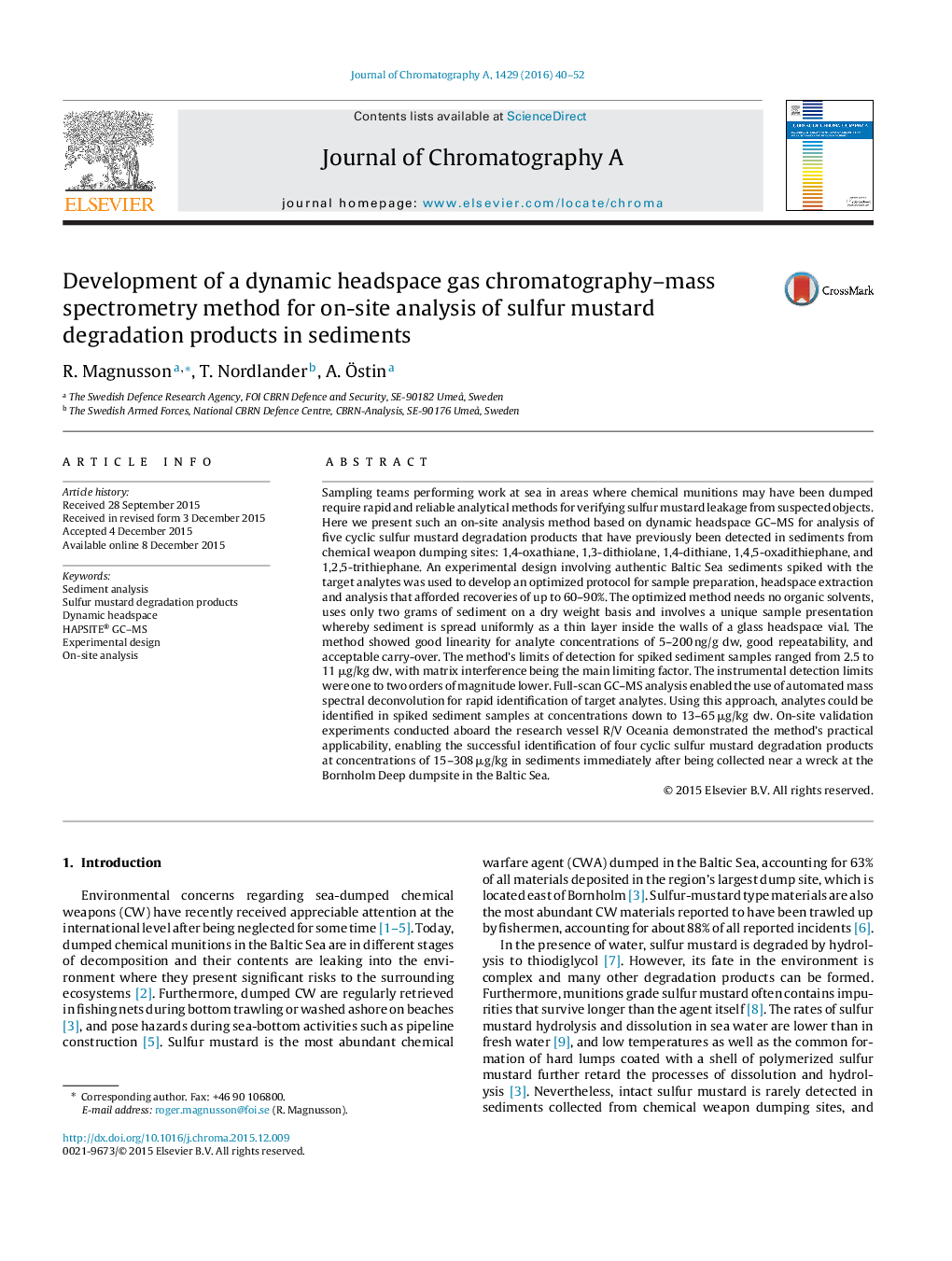| کد مقاله | کد نشریه | سال انتشار | مقاله انگلیسی | نسخه تمام متن |
|---|---|---|---|---|
| 7610437 | 1493497 | 2016 | 13 صفحه PDF | دانلود رایگان |
عنوان انگلیسی مقاله ISI
Development of a dynamic headspace gas chromatography-mass spectrometry method for on-site analysis of sulfur mustard degradation products in sediments
ترجمه فارسی عنوان
توسعه یک روش اسپکترومتر کروماتوگرافی گاز جیوه برای جابجایی پویا برای تجزیه و تحلیل در محل تجزیه محصولات خردل گوگرد در رسوبات
دانلود مقاله + سفارش ترجمه
دانلود مقاله ISI انگلیسی
رایگان برای ایرانیان
کلمات کلیدی
موضوعات مرتبط
مهندسی و علوم پایه
شیمی
شیمی آنالیزی یا شیمی تجزیه
چکیده انگلیسی
Sampling teams performing work at sea in areas where chemical munitions may have been dumped require rapid and reliable analytical methods for verifying sulfur mustard leakage from suspected objects. Here we present such an on-site analysis method based on dynamic headspace GC-MS for analysis of five cyclic sulfur mustard degradation products that have previously been detected in sediments from chemical weapon dumping sites: 1,4-oxathiane, 1,3-dithiolane, 1,4-dithiane, 1,4,5-oxadithiephane, and 1,2,5-trithiephane. An experimental design involving authentic Baltic Sea sediments spiked with the target analytes was used to develop an optimized protocol for sample preparation, headspace extraction and analysis that afforded recoveries of up to 60-90%. The optimized method needs no organic solvents, uses only two grams of sediment on a dry weight basis and involves a unique sample presentation whereby sediment is spread uniformly as a thin layer inside the walls of a glass headspace vial. The method showed good linearity for analyte concentrations of 5-200 ng/g dw, good repeatability, and acceptable carry-over. The method's limits of detection for spiked sediment samples ranged from 2.5 to 11 μg/kg dw, with matrix interference being the main limiting factor. The instrumental detection limits were one to two orders of magnitude lower. Full-scan GC-MS analysis enabled the use of automated mass spectral deconvolution for rapid identification of target analytes. Using this approach, analytes could be identified in spiked sediment samples at concentrations down to 13-65 μg/kg dw. On-site validation experiments conducted aboard the research vessel R/V Oceania demonstrated the method's practical applicability, enabling the successful identification of four cyclic sulfur mustard degradation products at concentrations of 15-308 μg/kg in sediments immediately after being collected near a wreck at the Bornholm Deep dumpsite in the Baltic Sea.
ناشر
Database: Elsevier - ScienceDirect (ساینس دایرکت)
Journal: Journal of Chromatography A - Volume 1429, 15 January 2016, Pages 40-52
Journal: Journal of Chromatography A - Volume 1429, 15 January 2016, Pages 40-52
نویسندگان
R. Magnusson, T. Nordlander, A. Ãstin,
